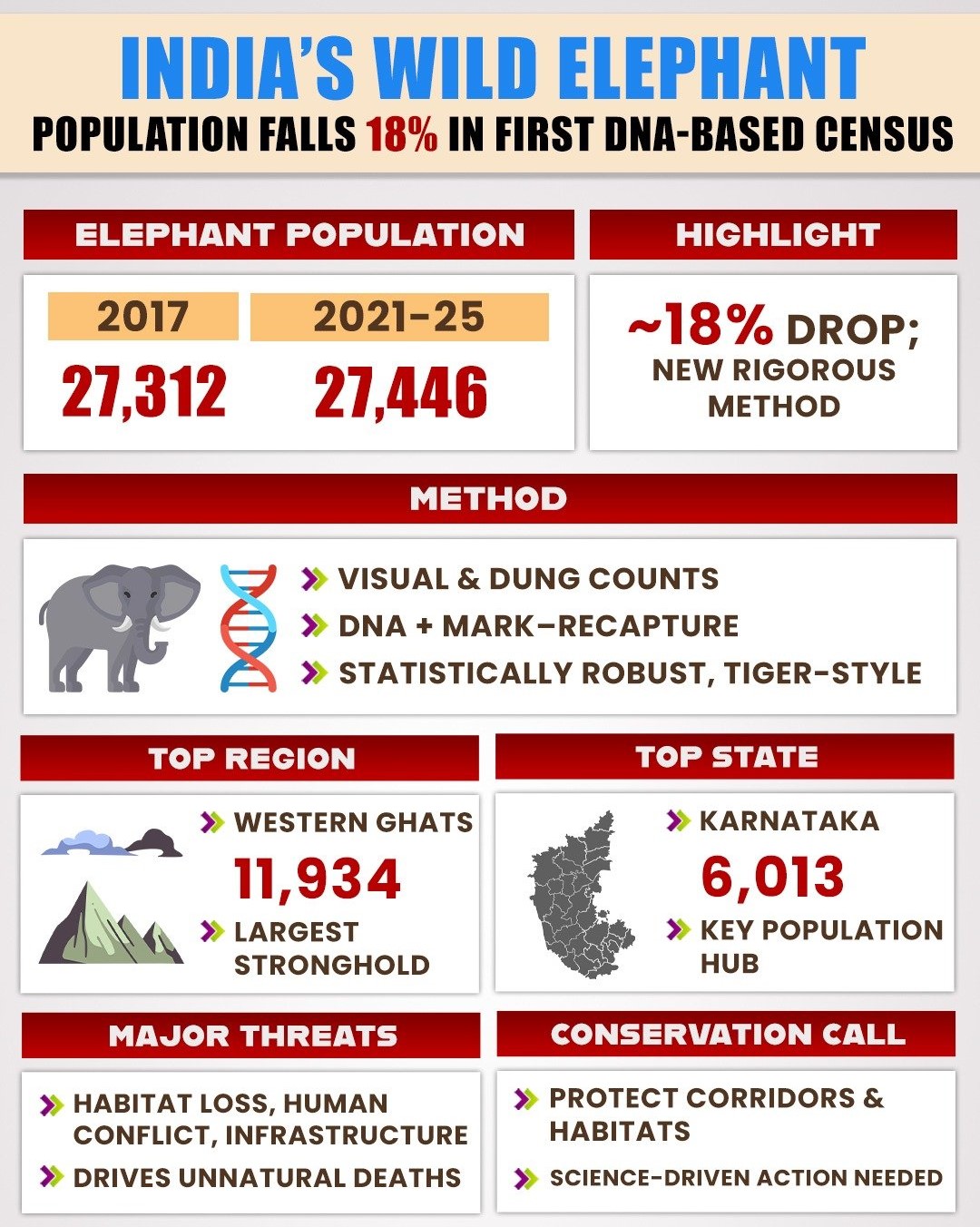Context:
India’s wild Asian elephant population is now estimated at 22,446 according to the latest All India Elephant Estimation (SAIEE) 2021–25, making this the country’s first comprehensive DNA‑based elephant census. This figure marks a reduction compared to the previous estimate of 27,312 in 2017, a drop of about 17.8%.
Spatial Distribution & State‑wise Numbers:
The new data also maps elephants across India’s major ecological zones:
-
-
- Western Ghats: 11,934 (the largest share)
- Northeastern Hills / Brahmaputra plains: 6,559
- Shivalik Hills / Gangetic Plains: 2,062
- Central India & Eastern Ghats: 1,891
- Western Ghats: 11,934 (the largest share)
-
In terms of states:
-
-
- Karnataka: 6,013
- Assam: 4,159
- Tamil Nadu: 3,136
- Kerala: 2,785
- Uttarakhand: 1,792
- Odisha: 912
- Karnataka: 6,013
-
About threats to Elephant Conservation:
The report highlights several ongoing challenges that threaten the viability of elephant populations:
1. Habitat loss and fragmentation: Expanding agriculture, plantations, infrastructure (roads, railways, power lines), and urban encroachment are cutting elephant habitats into smaller, isolated patches, disrupting movement and genetic exchange.
2. Corridor disruption: Traditional migration corridors are blocked or degraded, impeding elephants’ seasonal movements, feeding, and breeding.
3. Human–elephant conflict (HEC): As elephants stray into agricultural lands or human settlements, conflicts escalate, crop damage, property loss, retaliatory killings, electrocution, train collisions, and accidental deaths.
Initiatives to address these threats:
· Implemented Project Elephant, which supports habitat management, anti-poaching, and conflict mitigation.
· Designated Elephant Corridors to ensure safe migratory routes.
· Launched public awareness campaigns like Gaj Yatra.
· Recognized the elephant as a National Heritage Animal, emphasizing its cultural and ecological significance.
· Initiated the creation of a genetic database for captive elephants to improve monitoring and health management.
About Asian elephant:
The Asian elephant (Elephas maximus) is considered a keystone species because of its crucial role in maintaining the structure and diversity of forest ecosystems. By feeding on and dispersing seeds, elephants facilitate forest regeneration and maintain ecological balance.
In India, the Asian elephant is:
· Listed as Endangered on the IUCN Red List due to declining population trends.
· Protected under Schedule I of the Wildlife Protection Act, 1972, granting it the highest level of legal protection.
· Included in Appendix I of CITES, which bans international trade in elephant parts.
India has launched several initiatives, such as Project Elephant (1992) and the creation of 33 Elephant Reserves across 14 states, to safeguard elephant populations and their habitats.







